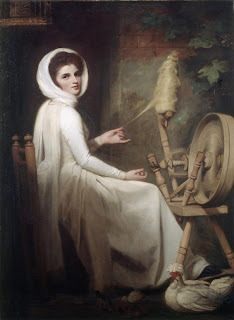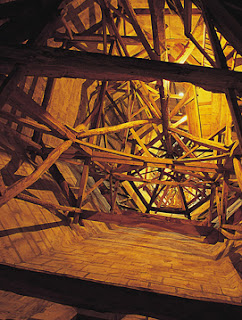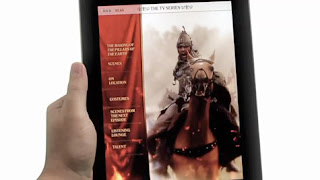William Thomas Beckford (1760-1844) was one of the most intriguing, contradictory, and notorious men of his era. At age 10, he inherited an enormous fortune, mostly from West Indian plantations worked by slaves. For the rest of his life, he indulged his every whim, including travel, building fantastic structures, and acquiring works of art.
He also inherited his father’s mansion, Fonthill Splendens, in Wiltshire; but it was not stupendous enough for Beckford, and he began building an amazingly tall (and insubstantial) new mansion nearby, which he called Fonthill Abbey.
Architect James Wyatt began building Fonthill Abbey about 1796; it was not completed until 1813, after the main tower had collapsed several times during construction. Beckford continued throughout his lifetime to acquire art and in several sales, to sell it in order to buy more. In some cases, he later re-purchased items he sold. Here is an account of one of his large sales, disposing of art and furniture from Fonthill Splendens.
Fonthill sale, from the Chronicle in the Annual Register of 1801, p. 49-50:
“21 August. Fonthill. A brief account of this day’s sale will give a competent idea of the whole. There never was, perhaps, in the world, a collection of finer, or more superb furniture, in proportion to its quantity. The books, and a very few of the best paintings only, were retained. The Distinguished elegance of this noted feat, the natural beauty of the grounds, the art and expence so profusely lavished on their improvement; a spacious family mansion, in the best style of modern architecture, replenished with an excess of the most voluptuous accommodation, naturally attracted, as may well be conceived, all the fashion far and near. From Salisbury, Andover, Bath, Weymouth, etc. all the subordinate towns, the villas and even the hamlets, in their respective vicinities, the roads swarmed with the young and gay; and before noon every chamber in the house, as well as all the adjacent grounds, were crowded with genteel people; the court and stable yard with carriages, and all the gates, doors and passages, with the laqueys and beggars. The auction was in the great hall, where an organ, 26 feet high, and 15 feet wide, is placed. This very masterly instrument, built and finished in such superlative taste, that it is said to have cost near £2000 played till the business of the day commenced. Every article disposed of might, both for value and magnificence, suit any palace in Europe. Not a stool or tripod or spring blind or window curtain, was sold for so little as a guinea. Some marble slabs when at more than 100 guineas each. A bust of old Homer was knocked down at 27 guineas, that of Virgil at 19.
A young lady had inadvertently placed herself by a find statues of the Venus de Medicis. When this delicate and beautiful article was put up, a wag archly asked which of the two was meant? The auctioneer modestly replied, the one was above all price; and he was authorized only to dispose of the other.
Everything in the room, fitted a la Turque, sold immensely high. The richness of the hangings, all silk or satin, of superlative quality, the brilliant French plates of glass which decorated and enlivened every side of the room, the sofas formed in the most sumptuous style of Oriental magnificence, the chairs and stools, all gilt with burnished gold, attracted every eye; and it was laughable to see even Wiltshire farmers furnishing their parlours with the gorgeous accumulation of inordinate fortune, and effeminate taste. Some articles, however, sold much under value. The organ went for no more than £290. It was purchased by the Rev. Mr. Ogle, brother-in-law to Mr. Sheridan.”
Beckford sold Fonthill Abbey in 1823; the tower collapsed again in 1825. Today, only a small portion still stands.
Beckford, also renowned for his authorship of the novel Vathek and other works, for his eccentric lifestyle, and his reclusive habits, moved to Bath, where he lived in conjoined townhouses in Lansdown Crescent and indulged in further tower building. The Lansdown or Beckford Tower can be visited in Bath today. For more information, click here.
































































